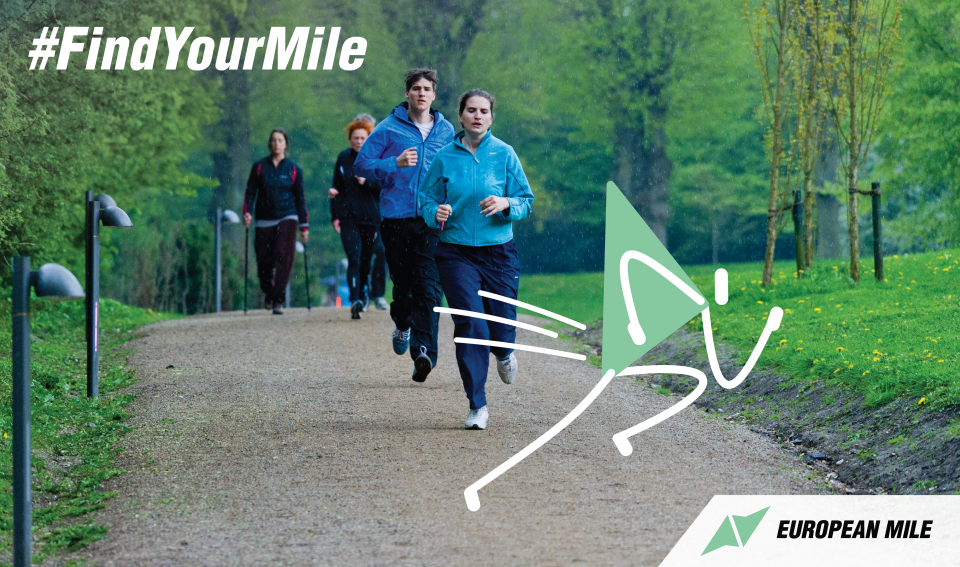5 reasons why short distance running and walking are great ways to exercise again

After the first lockdowns began in March 2020, the daily step count of citizens all over the world dropped suddenly and rapidly, which raised concerns for their physical and mental health as the world – and their bodies – stood still. Why is it so important to keep moving? And do short walks or runs really make a difference? Yes! And here are some ideas to get started despite all the ongoing restrictions.
Medical researchers have led the charge to promote physical activity over the past year as a way to combat the stress and physical fatigue of lockdowns:
“Governments and policymakers should be aware of the impact of social distancing measures on decreasing physical activity, since physical activity is an important determinant of health,” said lead author Geoffrey Tison, MD, MPH, a UCSF Health cardiologist and assistant professor of cardiology at UCSF.
With the European Mile we are also playing our part – by highlighting an easy way to start moving again as countries and cities slowly open up, the weather gets warmer, and the outdoors looks much more inviting for exercise. For the European Mile, we chose the distance of 1.6 km to suit walkers, runners, hikers, rollers... people who want to MOVE from A to B. The distance is short and achievable for virtually anyone willing to participate.
Here are 5 reasons why we think short distance running and walking are great ways to get moving again at your own pace.
1. You have everything you need to get started
One of the biggest benefits is the minimum preparation you need for a short walk or a run. Whether you’re working from home or the office, take some pauses in your day to get some fresh air and give your body some much-needed movement and activity. Since the mile is a short exercise time-wise, you don’t need to plan ahead. You can spontaneously go for a 1.6 km walk – or longer – whenever you feel like it during the day. You can choose the time of the day and the amount of time that you feel like walking or running without feeling the pressure of fulfilling some crazy exercise schedule. Choose the location: it can be a walk around the neighbourhood or around the office, a nearby park or a walk next to the sea or canals. Keep your running shoes in the car or in the office so you’re ready to be spontaneous!
2. Snap out of your computer posture
Taking a walk or run is a great way to improve your posture. Straighten your back, engage your core and focus on standing upright at least for those short periods in a day and watch the difference in your posture from day to day.
3. Give your eyes a break from the screen
Your eyes will be grateful for the break away from screens. If it’s possible, don’t look at your phone and try to focus on your surroundings. Whether you are in a natural or urban location, try looking for new things around you to keep your mind engaged while resting from work and screen time at the same time.
4. Reboot your body and de-stress
Taking outdoor walks or runs increases your blood flow and you get more oxygen into your system, which is directly connected to lifting your mood and concentration. If you develop a positive attitude towards exercise, walking or running can actually reduce the amount of stress you are feeling.
5. Get a full-body workout
Your body benefits much more from a 20-minute full-body exercise, such as running, than from a 20-minute workout for a specific group of muscles. By doing a full-body workout, you are making the most of your time spent on exercising. Instead of making a particular muscle group stronger, you could be developing endurance, whole-body strength, functional mobility, etc.
#FindYourMile and join people around Europe in moving again!
We invite you to experience this whole variety of benefits by joining in a European Mile event or running, walking and rolling individually and donating your miles - more details on how to donate your miles coming soon! #FindYourMile and start today by trying to incorporate short distance running or walking into your daily routine.











